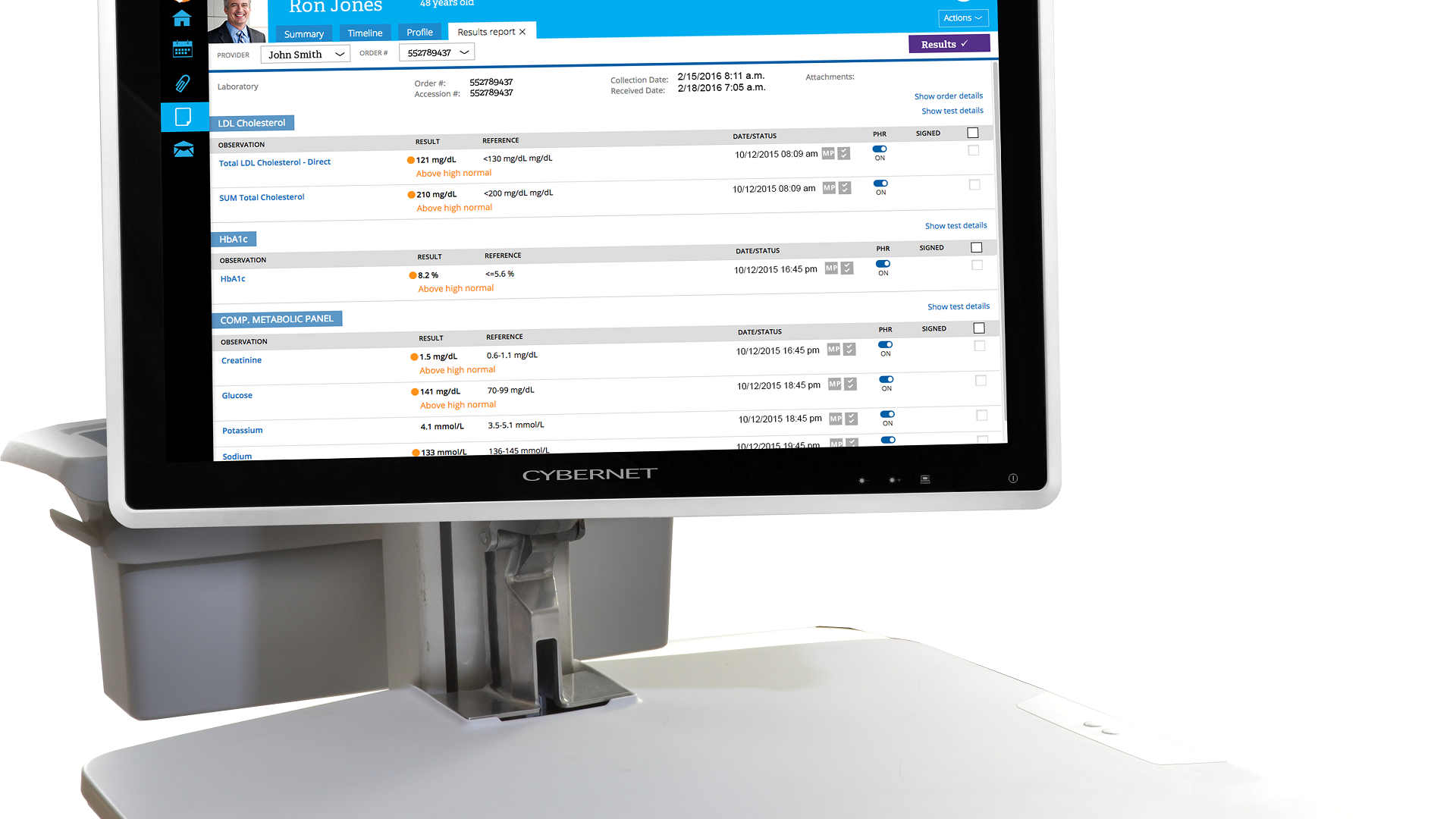According to HealthIt, more than 95% of hospitals and office-based physicians have started utilizing EHR software. It’s clear use of EHR software has become the majority standard in a decade. Medical professionals stick by this method of health IT and information monitoring because it reduces error, streamlines processes, and ensures patient satisfaction. However, that doesn’t suggest the EHR software universe is snag-free.
As with any software, problems can arise when a new EHR software product is released into a medical environment with a competing software product, and many sources note that a collective of medical professionals are raising concerns about one of the most pressing aspects of EHR software: interoperability. This aspect of EHR does not address the capability or functionality of the software itself, but rather EHR compatibility between systems that run on medical monitors. In other words, the ability of disparate systems to communicate data to one another.
What is EHR Compatibility?
Article Guide
EHR compatibility refers to a single EHR software’s ability to communicate and share data with other EHR software and medical systems. The issue isn’t too prevalent within facilities, but becomes a significant stopgap for patient care once help from outside that facility is necessary.
Take, for example, a patient who visits their local emergency room. As they’re passed along from their nurse to their doctor to even the pharmacist at the hospital, their information is inputted into a single EHR system, one that is used across the entire staff in that facility. Any time a staff member from that facility wants to pull up information on this patient, all they need to do is log into their EHR software.
What happens once a patient is discharged from the hospital? If they need to seek out specialized care from a doctor or physical therapist that uses a different EHR software, it’s a gamble as to how clearly these two different systems can share patient data. Often times, important data can be completely omitted or wrong values could be imported for crucial measurements such as medicine dosages. A recent study published in 2019 by JAMA highlights many of the potential disadvantages of EHR systems including their inability to accurately share patient data.
But for those a little more inquisitively minded, the question of what causes this translation error must be asked. And the answer essentially boils down to what’s called the CCD, or continuing care document.
In EHR Compatibility, the CCD is What Matters Most
The CCD, per Wikipedia, is an “XML-based markup standard intended to specify the encoding, structure, and semantics of a patient summary clinical document for exchange.” A compromised development by ASTM International and Health Level Seven International’s Clinical Document Architecure, it is encoded by EHR software as it contains a substantial amount of data including medications, allergies, problems, lab results, and patient chart data. This document is widely shared among medical computers and EHR devices.
While not a complete medical record, the CCD includes just the most crucial information for effective medical care. It should be viewable via any standard web browser, but some voices lament that’s not always the case with a lot of EHR software, which leads to one of the most prevalent problems in healthcare IT…
EHR Compatibility Can be Terrible Because of Proprietary Formatting
Much like proprietary audio files or specific Apple chargers vs. Android phone chargers, not every EHR software product exports a CCD that will be read by another. At first glance, it may seem that transferring EHR between systems is just a file transfer, but how does that file transfer take place? If medical professionals bring their own devices, there are HIPAA security concerns—putting a patient’s data on a USB flash drive certainly isn’t secure.
If one EHR system is web-based and another isn’t, how does an individual transfer the files? Does a physician-hosted EHR system function with a remotely hosted system or a cloud-based system? EHR compatibility problems can arise within hospitals—not just on a hospital to hospital transfer—if their IT departments decide on conflicting software environments, further causing connectivity problems. It’s a tough call between remaining secure, transferring the information from one medical monitor to another, and finding the quickest way to do so without compromising the data. Sometimes medical professionals have to print EHR documents and transcribe them to another platform, introducing human error and lengthening a typically automated process which can quickly lead to EHR physician burnout.
EHR has been a wide success because of the Meaningful Use program and the HITECH Act, but medical staff still spend time bothering with menial tasks getting information from A to B. Healthcare companies are encouraging EHR software developers to start using open format file types instead of proprietary. There’s still a lot of room to improve, unfortunately.
EHR Compatibility Depends on the Medical Computer
Certain medical computers, while meeting FDA standards for near-patient use, aren’t compatible with all EHR systems—some medical monitors operate on a 4:3 aspect ratio, while EHR systems may utilize a 16:9 ratio to display a full gamut of patient information.
A computer with an incompatible display may reject software installation or could limit the functionality of the software. Furthermore, highly advanced EHR systems require two-factor authentication, and if a system isn’t equipped with hardware to scan authentication methods, it may likely reject installation. Compatibility isn’t just a matter of speaking with other EHR software products—it’s a matter of if the medical monitor in question can even support it.
A Way Out of EHR Compatibility Concern
Epic is one of the most prominent EHR systems used in the medical industry, and there’s a strong reason for it; interoperability is a key aspect of the Epic EHR system. There have been strides to see a universal healthcare data format for EHR systems, but it’s still a goal that not every company adheres to yet, even though Epic has been a key software product in that avenue. The Sequoia Project is an organization that advocates for nationwide health information exchange, and Carequality is a project within Sequoia designed to address interoperability between all parties in a healthcare IT network—addressing policy and technical agreements for the exchange of data.
As for now, EHR compatibility and interoperability within your own facility can be addressed by ensuring all computers running a specific EHR—whichever it may be—remain in the same local “network.” Having a unified system with similar hardware cuts down on training time and bypasses any compatibility problems. Ensuring that the computers that run the EHR software are certified for that software is a must too—purchasing a computer deployment that ultimately doesn’t work with a given EHR system is wasted money.
If your corporation goes with Epic for your EHR solution, keep in mind that many of our CyberMed computers are Epic and Cerner certified.
The Future of Data Sharing
Hopefully in the near future we’ll see a unified, open format data file shareable among all EHR systems so we can focus on patient health instead of the technology supporting it. This unified system will take effort from several roles—the government, EHR providers, payers, and patients too. Some medical professionals argue that EHR developers must have proper incentives to cater to a unified system; it is a competitive market, after all.
Until then, the most individual facilities can do is ensure their own internal EHR compatibility and medical device interoperability are up to snuff. For more information on what medical technology can help facilitate that, contact an expert from Cybernet today.
3 Problems Hospitals Face that Can Be Reduced with Medical Computers
January 31, 2018
There are hiccups in workflow and patient care caused by universal problems in hospitals, but thankfully they can be shrunk. Before the communication age revolutionized how we do work, mistakes were abundant and costly.…
0 Comments6 Minutes
Can Your Medical Computers Run Military Genesis EHR?
June 23, 2017
MHS Genesis EHR is now a reality. After four years of planning, months of tests and delays, and a $4.3-billion contract, Department of Defense’s first electronic health records implementation is live at Fairchild Air…
0 Comments10 Minutes
EHR Software: Benefits and Challenges for Medical Grade Computers
July 13, 2018
The rapid expansion of technological innovation has been keenly felt in the medical field. Healthcare providers now enjoy the benefits of new surgical tools, dedicated medical PCs, and high-end devices that make…
0 Comments8 Minutes
You Can't
Learn from a Pop-up
But we can deliver knowledge to your inbox!
We dive deep in the industry looking for new trends, technology, news, and updates. We're happy to share them with you.
Knowledge, News, and Industry Updates Right in Your Inbox





